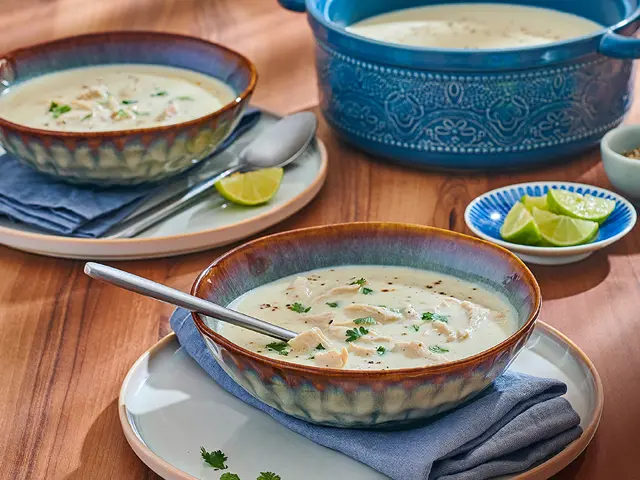


Make sure to let the waffle iron heat fully before adding your batter – starting the cooking process before the iron is ready won’t result in the correct balance between crispy outside and fluffy inside.
Overworking your batter will result in a tough, dense waffle. Whisk steadily and at an even pace until smooth so you don’t run the risk of rushing and ruining the end result.
Your Belgian waffle batter should be thinner than the kind of batter typically used for pancakes, for example. It shouldn’t be too thin or watery though, and should sit comfortably in your waffle iron.
While Belgium has been serving some kind of waffle since 1604, there are technically two versions of the sweet treat commonly found in the country. The Brussels waffle is similar to the kind served in the US, is shaped like a rectangle, and is fairly light and airy. The first written records of this version being served in the city’s cafes date back to 1874.
The Liège waffle, on the other hand is thicker, sweeter, contains chunks of caramelised sugar and is usually served hot. This recipe is a take on the Brussels waffle.
The beauty of waffles is they work incredibly well with virtually any topping you can think of. Chocolate and banana is one classic, and the fruit can be swapped for strawberries, raspberries or blueberries with equally good results. Alternatively, try combining the chocolatey sauce with chopped nuts for a pleasant texture contrast.
If you’d rather scale back the chocolate content, ditch the chocolate sauce and instead try nut butter like almond butter, ice cream or thick yoghurt and honey. A toppings buffet is also a fun idea where small bowls of anything from fresh fruits, nuts and chocolate chips to sprinkles, freeze-dried berries and crushed granola are served for a build-your-own dessert.

Fall in love with pasta all over again, as you serve your loved ones creamy dishes made richer with Puck—and your special touch. Our inspiring recipes, general guidelines, and detailed articles will set you on the path to culinary creativity. With Puck’s entire range of cooking creams and sauces that meet your high standards, you’ll love putting your personal spin on pasta.